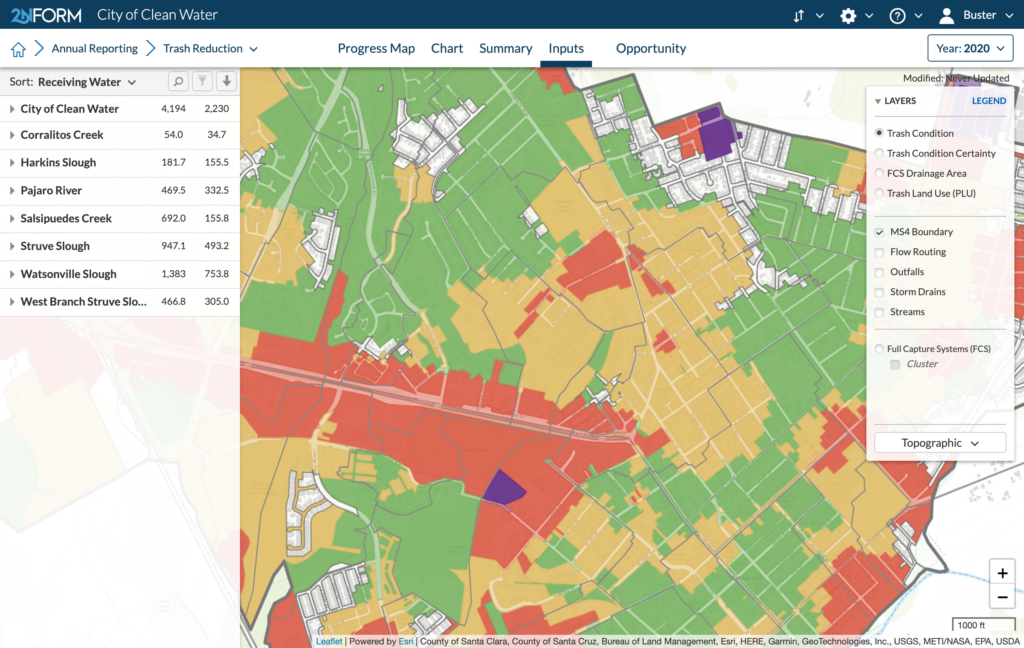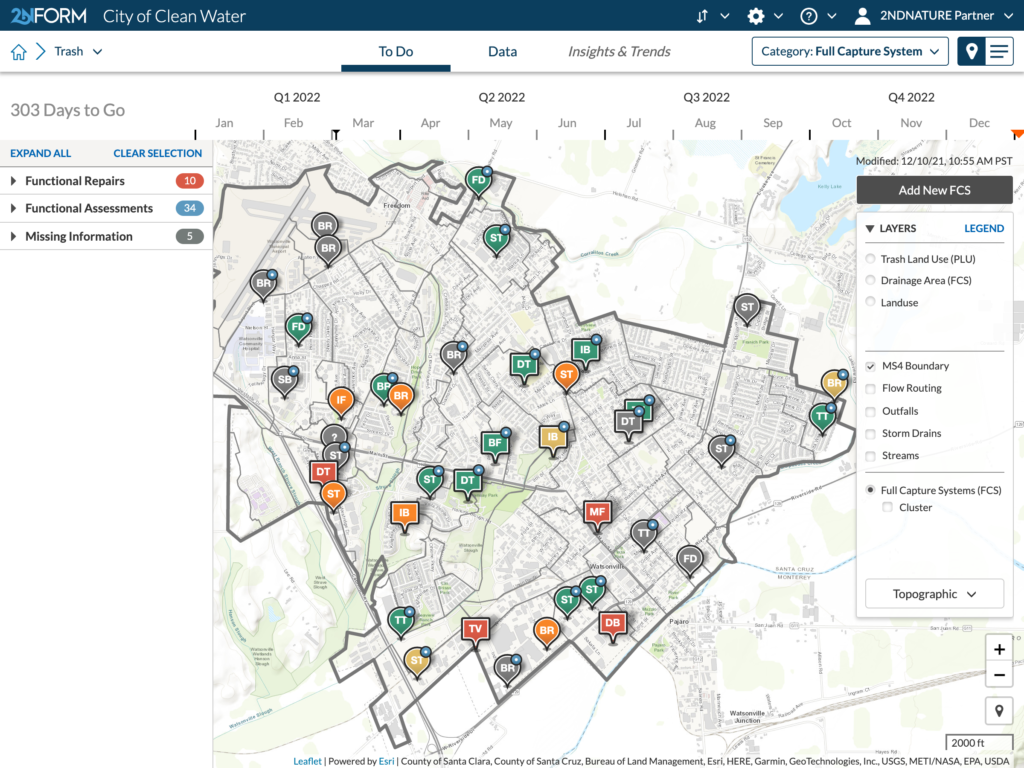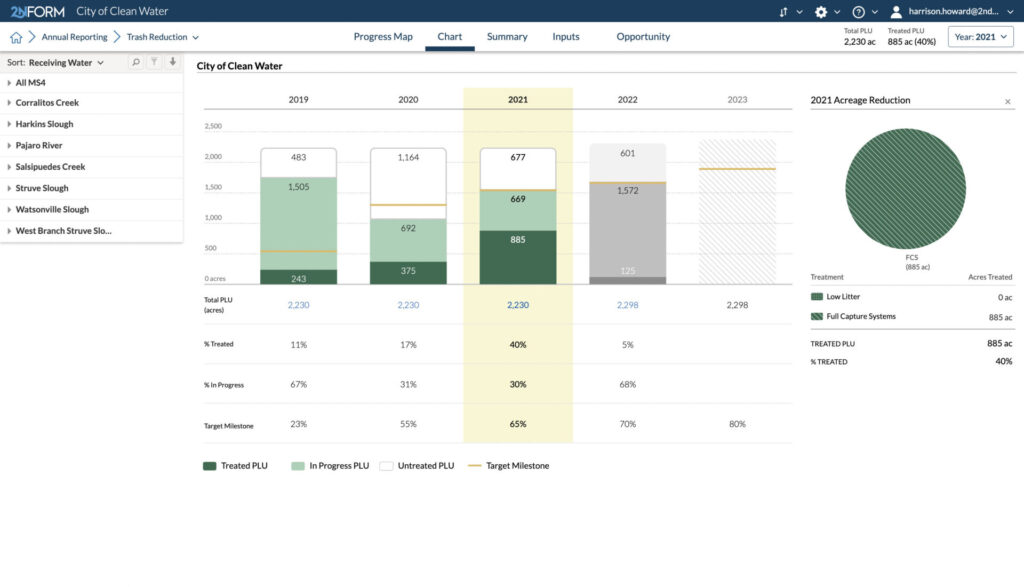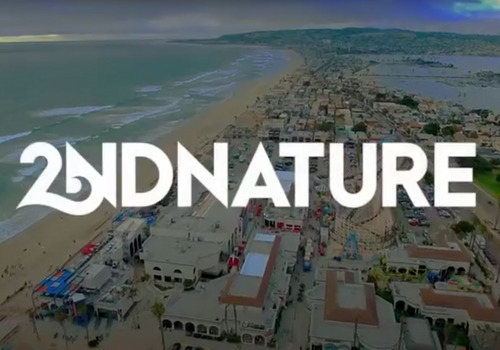How much trash is in the world’s oceans? A 2014 study put the amount of floating plastic in the oceans at about 5.25 trillion particles, with an estimated total weight of over 250,000 tons. Over 80% of that trash comes from land-based sources: during rainstorms, all the litter in our communities funnels into our stormwater systems, and if it is not dealt with, into our waterways.
These horrifying numbers are a call to action for stormwater managers and city leaders. We can stop trash from going into the oceans. We can stop trash from going down the drain and into the waters we all share. We can do it for our communities and for our world.
Some states are already including trash reduction requirements in MS4 permits, notably California, whose Trash Amendments set an ambitious goal of Zero Trash Down the Drain by 2030. More states are likely to follow soon.
There are two main methods for dealing with trash, structural and non-structural. Structural approaches are your infrastructure assets that capture trash before it enters the receiving waters. Non-structural approaches include stopping trash from entering the environment and/or collecting it before it enters your stormwater infrastructure. Knowing when and how to apply these different methods is key to developing a resource- and cost-effective strategy.
Whether you’re motivated by a desire to clean up the trash in your community, comply with EPA regulations, stop trash from accumulating in the oceans, or all of the above — the best method is a scientific method that uses technology and data to drive progress.
Step 1: Where Is the Trash?
The first step is to quantify the problem by understanding where your trash resides. If you know your municipality well, you probably know where trash tends to accumulate. But you can’t measure this intuitive knowledge, or use it to build an effective strategy to trash removal.
Research shows that trash moves around; it is highly variable over space and time. This makes trash tracking difficult to quantify. The solution is to capture this variability through data collected over space and time. A robust software platform like 2NFORM offers a solution based in peer-reviewed science that uses built-in analytics specifically designed to help identify and predict where trash exists and will likely accumulate. Not only can you see very high, high, medium, and low trash areas on your map, but you can also see the certainty level.

Step 2: See the Impact of Structural Assets
Now that you’ve quantified the problem, you can take a scientific approach to implementing solutions.
Structural stormwater assets — also commonly called structural BMPs, structural controls, or full capture systems — are an essential element in removing trash from the water.
In order to understand the role structural assets play in cleaning the water in your community, you need to know where these assets are, what type of assets they are, and how well they are functioning. Most municipalities do not have this information at their fingertips, or if they do have it, the data is disorganized and difficult to analyze or use for planning purposes. Even worse, failure of assets can lead to costly events like asset damage and flooding.
2NFORM includes a rapid assessment tool that guides field inspectors to categorize structural assets by functional type, even if records do not include the original specifications. This assessment includes a maintenance schedule, maintenance history, and functionality assessment. 2NFORM tracks when maintenance is due for every single asset — not just the representative sampling that many municipalities rely on — so you can be sure that all assets are working at full capacity to remove trash from the water.
In California, the Trash Amendments require that a full trash capture system be able to treat a one year/one hour storm for particles larger than 5 mm in order to qualify. The 2NFORM rapid assessment tool evaluates this for you.

The 2NFORM software shows not just where all your structural assets are, but the priority area each asset treats, how many acres it includes, and how much of the permit area they’re treating when they all work together.
This both provides a baseline for what you are treating now, and allows you to measure progress over time.
Step 3: Layer on Non-Structural Solutions
Non-structural solutions can also be an important part of your approach to keeping trash out of the water by getting it off the streets before it can be swept into waterways during the next storm. This preventative approach can reduce the amount of trash entering structural assets and significantly reduce maintenance and repair costs.
Any number of programs, from street sweeping to community cleanups, can help remove trash from the environment. The 2NFORM trash condition map shows you where trash accumulates most in your community so you can create data-driven plans to address the trash. And you can see the results of these efforts over time, as the maps change color.
You can even quantify progress over time, with charts that show treated priority land use (PLU), acres that are in progress, and how many acres are still untreated. This lets you see how well your efforts are working, and whether you’re on track to achieve litter reduction goals.

You Need A Better Way
The old way of doing stormwater management — jotting down field observations with paper and pencil, static maps, thousand page annual reports filled with excel sheets of numbers — won’t get the trash out of the water, and they won’t get you into compliance with trash requirements in your MS4 permit. You need a better way.
You need robust software that includes advanced analytics and predictive capabilities. You need to know where the trash is, what impact your structural controls are having, and how best to use non-structural solutions to make the most of your time, money and resources. Your community will be grateful for cleaner streets and waterways. And you’ll know that you’re not just checking the boxes for compliance: you’re actually making the water cleaner.
2NFORM: Software Built On the Best Stormwater Science
2NFORM is a suite of solutions for stormwater operations and maintenance, purpose built by stormwater experts and scientists who are fiercely passionate about clean water. Foundational modules handle information management and reporting on the six minimum control measures required by most MS4 permits. Additional modules empower stormwater managers with advanced analytics and planning capabilities, using the data collected for compliance to drive actual improvements in water quality.
2NFORM is the most advanced software for stormwater management, and the only tool that uses built-in organizational tools and analytics specifically to help communities keep trash out of receiving waterways.


